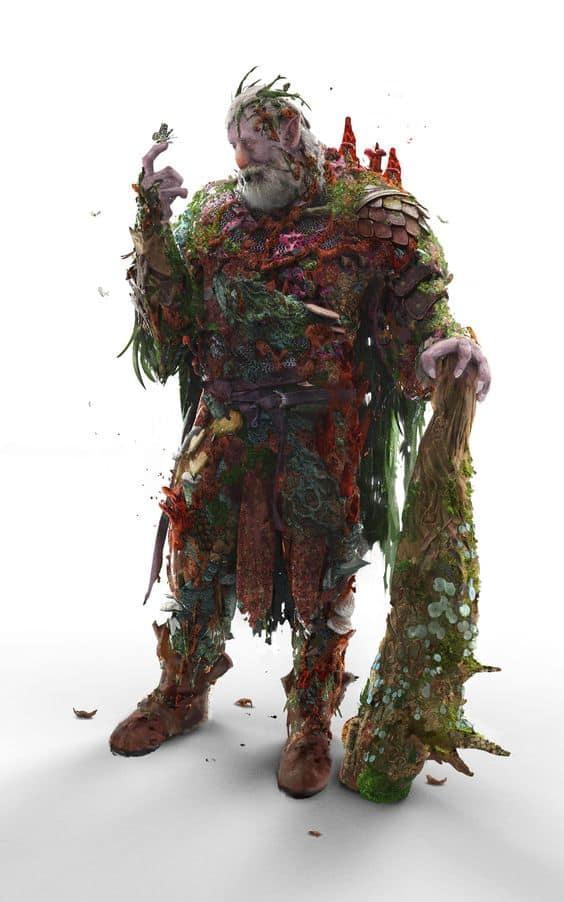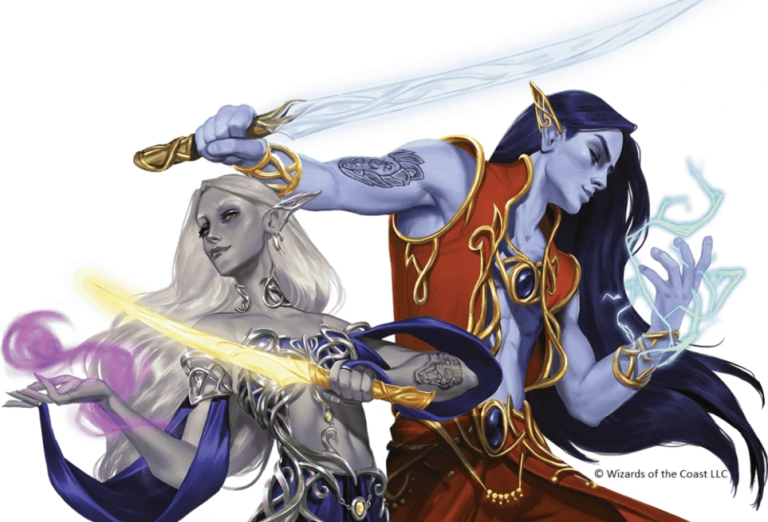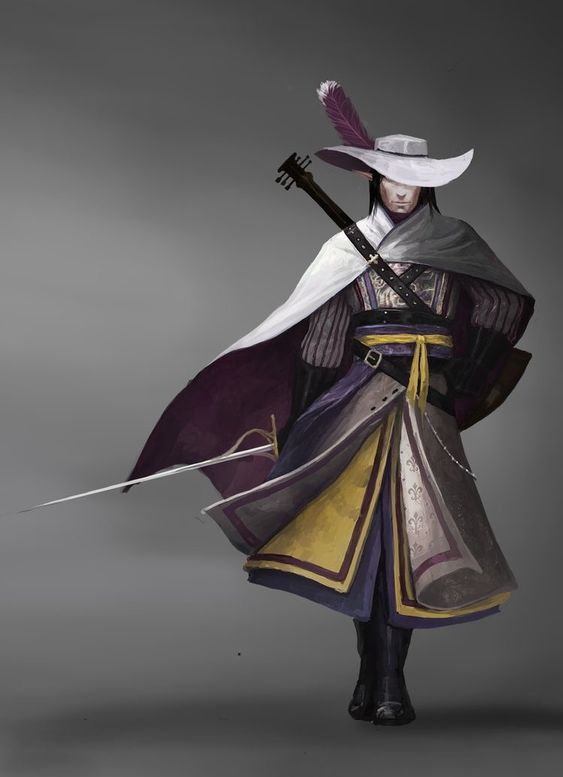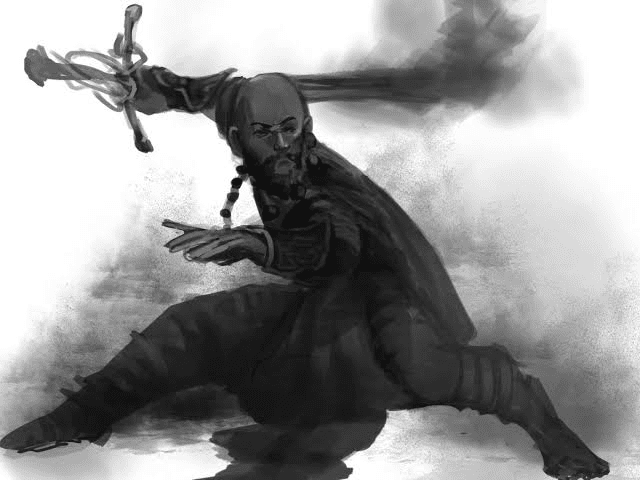D&D 5e: Way of Mercy Monk Guide
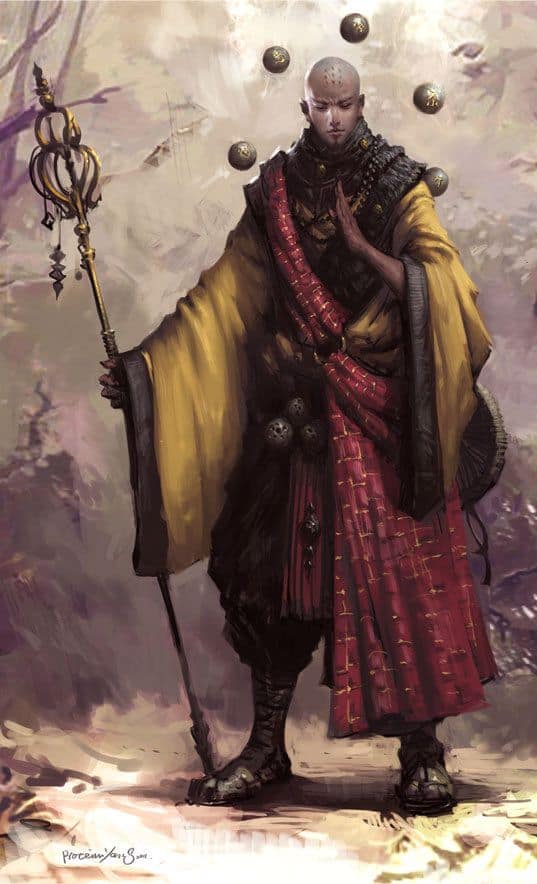
D&D 5e: Way of Mercy Monk Guide
Role in the Party
Traditionally, many Monks have taken the role of doctors, herbalists, physicians, or other community healers, even when their temple also had a warlike aspect.
The Way of Mercy Monk takes this idea and runs with it, hard. Monks who follow this philosophy learn to channel Ki, the natural energy of life, using it to set broken bones and heal bleeding wounds.
But as with all things in life, the path is two sided and circular. What the right hand gives, the left hand can take away, and if they must, these Monks can deliver the ultimate Mercy, in the form of death.
Versatile characters that are as happy attacking their enemies as they are tending to the party, the Way of Mercy subclass can slot happily into any party composition. This guide breaks down the subclass and some effective choices to help build your character.
Epic
Good
Meh
Bad
The Way of Mercy Monk subclass is found in Tasha’s Cauldron of Everything. Click here to pick up your own copy of Tasha’s Cauldron of Everything!
Way of Mercy Features
Implements of Mercy: Proficiency in Insight and Medicine, which both build from one of the Monk’s core stats and the Herbalism Kit. Free skill and tool proficiencies are always nice, especially when they’re not the sole ability a subclass gets at that level.
The Way of Mercy also gets a natty little mask to wear when they’re doing their doctoring. This has no mechanical effect, but it is a fun, flavorful little touch.
Hands of Healing: Also at level 3, the Way of Mercy allows a Monk to channel healing energies through their fists. By spending a Ki point, the Monk can touch a target to heal HP equal to their martial arts die + WIS modifier.
Whenever the Monk uses Flurry of Blows, which also costs a Ki point, one of the bonus action attacks can be freely swapped into a Hand of Healing, allowing the Way of Mercy to heal an ally (or themselves) when they attack.
This is a very solid ability for a few reasons. One, the amount of healing is solid and scales very nicely as the Monk levels, their martial arts die improve, and their stats increase.
Two, it can be used on any target within range, including the monk, and can also be used to karate kick a party member on 0HP back to life.
Three, the Monk’s entire Ki point reserve comes back on a short rest. So this is effectively a ton of free HP to keep the party topped up every time they take a midday break.
Hands of Harm: Also (also) at level 3, the Monk can spend a Ki point after hitting with an attack to add bonus Necrotic damage equal to one martial arts die + WIS.
This is probably less useful than Hands of Healing, but it’s green for two reasons. The first is that in an emergency, the Monk can throw out multiple empowered attacks per round, which stacks damage up very fast.
The second reason is that this is activated after the attack roll is made, so the Monk can see the result. As it rolls a dice, the damage is doubled on a crit, meaning that the Monk can save their Ki for the times they land critical strikes. The Monk, with its rapid flurries of attack rolls, will naturally land a lot of crits, and also has Stunning Fist from level 5, which turns every attack into an automatic critical strike, then burn the resources for an absolute ton of damage.
Physician’s Touch: From level 6, the Way of Mercy’s class abilities become drastically empowered.
Hands of Healing can choose to end one disease or condition (chosen from a small list, including stunned) the target is suffering from, as well as heal them.
When using Hands of Harm, the Monk can choose to Poison the target (Disadvantage on attack rolls and ability checks) until the end of their next turn, with no save.
This ability is incredibly powerful. It builds on what the Monk already wanted to do and allows them to flat out remove some of the most harmful conditions in the game from the party, or utterly ruin the chances of a melee enemy ever landing an attack, for the price of a single Ki point.
Flurry of Healing and Harm: At level 11, the Way of Mercy learns to further enhance their Flurry of Blows.
Now, when using Flurry of Blows, the Monk can choose to replace both attacks with Hands of Healing attacks, healing 1d8+WIS twice, for the cost of a single Ki point.
Alternatively, when using Flurry, the Monk can boost one of the attacks with Hands of Harm’s damage, also for no extra cost beyond the 1 Ki of Flurry.
Again, this builds on what the Monk already does, adding even more power to its core abilities. Considering the amount of Ki a Monk can have (a single short rest gives a level 11 Monk 22 Ki points to spend!) and the number of times per day they can expect to Flurry of Blows, the amount of power this single ability offers the class is obscene.
Hand of Ultimate Mercy: From level 17, the Way of Mercy Monk can flat out resurrect a creature that died within the last 24 hours, at the ridiculously low cost of 5 Ki points.
The ability can only be used once per long rest, but it’s worth reiterating here that long rests only take 8 hours, and Ki points refresh on a short or long rest.
This ability is incredibly powerful, and a fitting capstone for the subclass. Plus, the mental images it conjures are simply amazing. Party members who die near the Way of Mercy Monk are going to get punched back to life, after, of course, the Monk has had a quick nap.
Strengths
The Way of Mercy is an incredibly strong subclass that builds on top of the standard Monk chassis with a wide range of effective abilities that are going to be useful in almost every encounter the Monk finds itself in.
Like all Monks, the Way of Mercy is an effective skirmisher and brawler, capable of pushing its damage by spending easily renewable resources, or dropping multiple Stunning Blows into a single, powerful boss enemy until it finally fails its save.
But unlike many Monks, when other characters are hurting, this subclass is capable of stepping in and undoing that damage. Able to channel their Ki through their hands, the subclass can pour out a surprising amount of HPs back into the party, as well as at later levels undoing negative effects, or even outright rejecting death.
It’s those later abilities that are key to the power of the Way of Mercy. Being able to heal a party member and potentially remove a powerful negative condition, as part of the same attack action that the Monk would be taking anyway, is a very strong ability that ignores a lot of the opportunity cost that makes healing during combat a bad idea in 5e.
This is strengthened by the fact that all of the Way of mercy’s abilities build off of each other in a very natural way, and don’t cost anything more than a point of Ki, which by mid-levels is plentiful, and fully refreshes on a short rest. The result is a mobile and deceptively tanky damage dealer that can and will bounce around combat encounters, healing and killing at its whim.
Outside of combat, the Way of Mercy has a built-in identity made and ready. Healers, mediators, and teachers, these Monks are happy to step into social encounters and act as impartial third parties, and may also have skills that tend towards wilderness survival, or even community leaders.
Weaknesses
One of the biggest issues with the Way of Mercy is how back-loaded its abilities are. While the subclass is incredibly strong, at lower levels, when the class only has a handful of Ki points and one real ability, the class will mostly feel like a base monk with some incidental healing attached.
The Way of Mercy also has a propensity to burn through its Ki. While it might feel good to use Flurry every turn for the extra healing or damage, that will very quickly leave the Monk out of resources and needing a short rest.
It’s far better to stagger out Ki expenditure, dropping points on tactical uses of Hands, while throwing the occasional Stunning Fist against targets that leave themselves open. As the Monk levels, an increased Ki pool and abilities that build directly onto existing abilities without increasing their cost mean this becomes much less of an issue.
It’s also worth remembering that, built-in healing or not, the Way of Mercy is still a Monk. That means a middling AC and d8 hit die, which translates to a reasonably fragile character, especially for one that wants to brawl on the front lines.
Like most Monk builds, the Way of Mercy wants to operate as a skirmisher, darting into the fight alongside allies, picking on isolated targets, and focusing down their enemies. In a straight duel with a heavy hitting foe, unless the Monk is spending major resources, they’re going to get hurt.
Finally, Monks as a class can sometimes lack things to do outside of combat situations. The Way of Mercy comes with a built-in flavor that helps with this, but besides rolling Perception or Survival, and backflipping across the occasional chasm, the Monk’s impact here can be limited.
Best Race Options
Metallic Dragonborn: A choice of stats and resistance to an elemental damage type are nice, but the big draw is the variety of breath weapons the Metallic Dragonborn has.
The first scales with level, and can be used multiple times per day in the place of an attack, and the second is a one-use disable effect that either knocks back or Incapacitates. Both are incredibly useful to a class that traditionally lacks AOE, and don’t cost anything more than one of the punches you were going to be throwing anyway.
Owlin: Free stat choices, Darkvision, and proficiency in Stealth. But the key thing here is the constant flight that’s only limited by armor choices.
You’re a Monk. You don’t wear armor. Grab the Mobile feat and flyby attack your enemies every single round, while healing your allies with gentle pats to the head. Glorious.
Lotusden Halfling: There is no mechanical downside to Small characters being Monks, save for the 5ft reduction in movement speed, which Monk abilities naturally compensate for.
The Lotusden Halfling has perfect stats, Advantage against being frightened, the ability to move through larger creature’s squares, some daily spells, and the Halfling Luck ability to reroll 1s. And when you make as many attack rolls as a monk, 1s tend to come up a lot, so that’s a lot of rerolls.
Choosing the Right Skills
The Way of Mercy already gains Insight and Medicine for free, both of which are handy to have and make the class a lot less skill starved than the traditional Monk.
This opens up the class to try and pick up some extra utility skills. Perception and Stealth are both always useful, and the class will want the stats to make them good at both.
Survival builds from WIS and is useful out in the wilderness, where many adventures take place. And while the Way of Mercy won’t be the best at them, picking up one or two knowledge skills is a fun way to round out a character.
Fitting Feats
Crusher: Increase a stat, and gain some serious boosts. Once per turn, whenever the Monk deals damage with a bludgeoning weapon (any unarmed attack) the Monk can automatically move the target 5ft.
On top of this, whenever the Monk crits, any further attacks against the target are made with Advantage until the start of their next turn, a massive boost to the rest of the party. (And any more attacks you have left.)
Tough: As dull as this feat might be, the Monk isn’t a class with a lot of HP to spare. The Tough feat increases the HP of a Monk with an average CON stat by more than a quarter at every level, ensuring that they’ll still be standing and able to dish out healing when the fighting gets thickest.
Mobile: More than any Monk, the Way of Mercy needs to be able to move. The +10ft movement this feat offers naturally synergizes with the speed increases of the Monk class, creating a character with a minimum 50ft base speed from level 2.
But the biggest benefit here is the ability to slap a monster in the face, then sprint across to an ally in need, ignoring opportunity attacks, to deliver a well-timed Hand of Healing and keeping them on their feet when they need it most.
Optimal Backgrounds
Far Traveler: Perception and Religion both make sense, and an instrument or gaming set, plus a language, add a little mystique to a character that might have come from some long-forgotten monastery.
Hermit: Medicine and the Herbalism kit are already on your list, so are open choices. A language and Religion suit the background of many Way of Mercy monks.
Urchin: Two DEX based skills suited towards skulduggery, plus Tool proficiencies to back that up, in case your healer also has a side gig as a thief.
Multiclassing Options
Peace Cleric: While it fits perfectly both thematically and mechanically, a Peace Cleric/Way of Mercy Monk is strong enough that it starts to feel a little cheesy.
The main reason is the Peace Cleric’s level 1 ability, Emboldening Bond. This is a massive boost to the abilities of two members of the party that lasts for a long enough duration to always be relevant. It also scales entirely with character level, ending in an ability that can deliver big buffs to six party members up six times per day.
The Cleric also requires no stats the Monk otherwise wouldn’t have and offers access to a divine spell list that’s packed with useful buffs and utility, including the Guidance cantrip, Bless, and Shield of Faith for +2 AC. Fair warning, this build is incredibly powerful and can trivialize encounters, so use it at your discretion.
Soulknife Rogue: Taking levels in Rogue and Monk always feels like building a character who operates from the shadows, like some sort of magical Ninja.
This build revolves mainly around the Soulknife’s psychic blades. These are Simple melee weapons with the finesse quality, which means they count both as a Monk weapon and don’t block Way of Healing abilities on unarmed strikes, and can be used to deliver Sneak Attack damage. A character with this build will shift freely between murdering opponents with ephemeral blades of energy, then delivering Ki empowered strikes that heal and kill.
The Rogue also offers a massive amount of out-of-combat utility that the Monk otherwise lacks. Skills, Expertise, Cunning Action, everything it gives is fantastically useful, and more importantly, enjoyable to play.
Battle Master Fighter: Taking 3 levels of Battle Master can offer up some solid utility effects to the Way of Mercy Monk. Things like Disarming Strike or Menacing Attack can lock enemies out of taking useful actions, and Parry or Bait and Switch bring a lot of mobility and defense.
Levels in Fighter also offer Second Wind, for more effectively free healing, the incredibly useful Action Surge for the times when you want to punch someone in the face six times in one round, and a fighting style. (We recommend Blind Fighting for 10ft blindsense, or Interception to deflect attacks aimed at allies.)
Would I recommend playing a Way of Mercy Monk?
The Way of Mercy takes a class that’s traditionally derided for being very linear in how it operates and massively diversifies what it wants to do. Without actually changing anything about the core class.
That’s an incredible achievement, especially considering how far into 5e we are now. This guide’s writer had a Way of mercy Monk sit down at his table for the first time in mid-2022, and was surprised by how much fun the class was just to watch. If I were running a Monk as my next character, I’d probably be taking a very close look at this subclass first.



